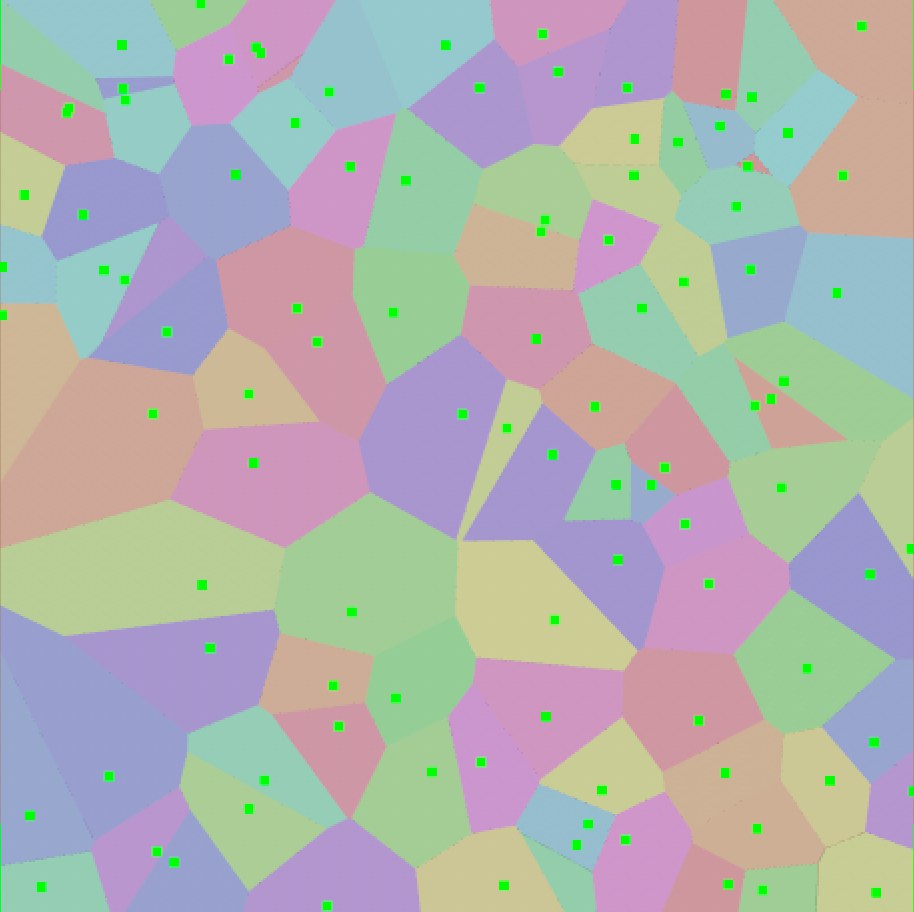Voronoi Fracture
![]()

The Voronoi Fracture object breaks (sub)-objects down into smaller fragments that in their entirety maintain the shape of the original object. MoGraph Effectors can then be applied to the fragments in the usual way. As with other clone-generating objects, Dynamics can also be applied to the fragments (or ,clones’, depending on the terminology used), see also here.
This, for example, makes it possible to let objects crumble without having to do a lot of elaborate modeling.
The fragmentation works best on closed, volumetric meshes.
The Voronoi Fracture object can be made editable anytime by pressing the c key, i.e., all fragments will be grouped as individual objects under a Null object. Tags (e.g., Selection or Vertex Color tags) and objects (e.g., Displace objects in the Details tab) will be created.
Voronoi Fracturing
Voronoi cells are used to fracture an object.
Voronoi cells are based on a pre-defined number of points. Each point is part of a single Voronoi cell. Simply put, an edge is created traverse between two points:
 Voronoi cell points can be displayed in green
Voronoi cell points can be displayed in green
This not only two-dimensionally as shown above but also in 3D space with freely arranged points. The distribution of the edges is done automatically. The only influence that you have is on the distribution and density of the points with which the Voronoi Fracture object can be fed using different methods. These can be polygon or spline points, particles, points defined per texture and much more. These points do not have to lie on the surface or within the volume of the object to be fragmented. At those locations at which the Voronoi cells intersect with the object to be fragmented, corresponding surfaces will be created.
Since Voronoi fragmentation happens in realtime, Mesh tools such as the Brush can be used to affect the fragmentation. To do so, drag a polygonal object into the Source list (Sources tab). Then edit the polygonal object using the Mesh tool. The same applies to splines.
As long as the Voronoi Fracture object is being used to fragment (i.e., the status bar displays corresponding information), no interactive processes should be started because the fragmentation could otherwise be aborted.